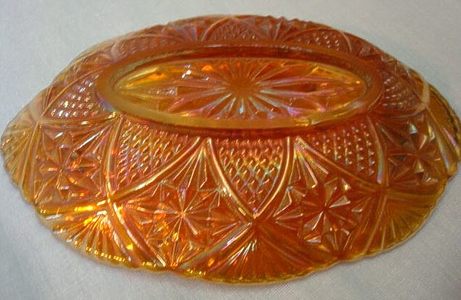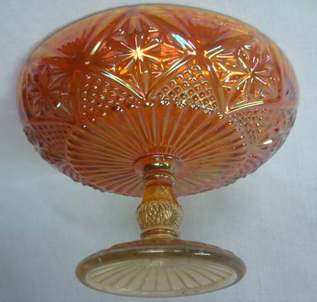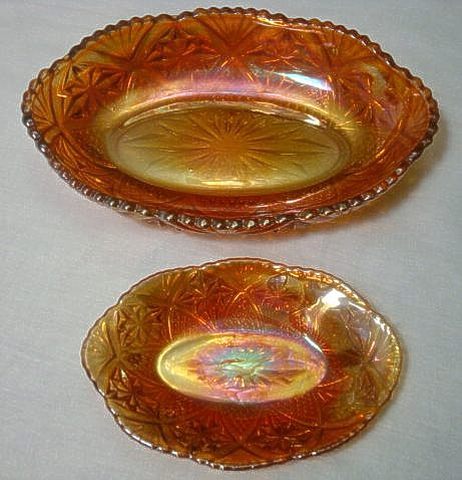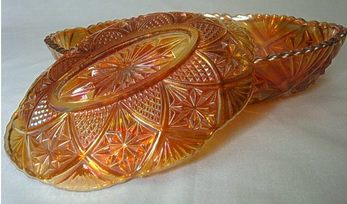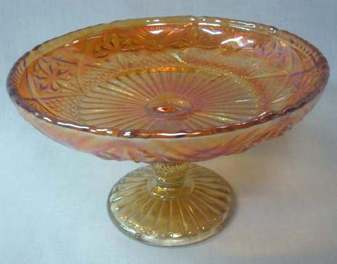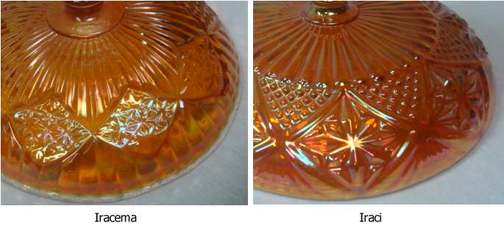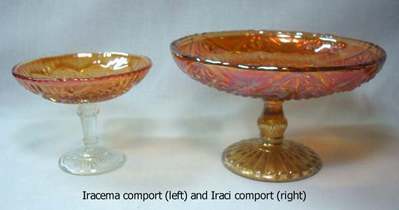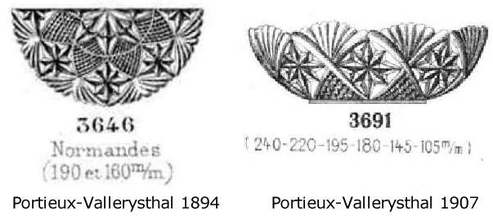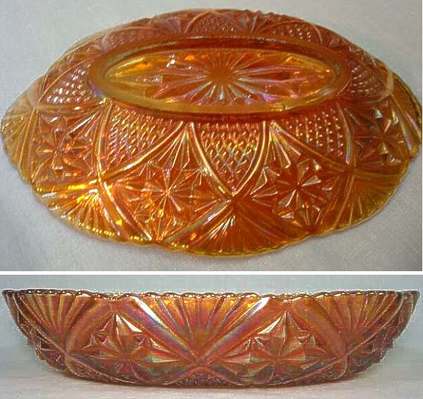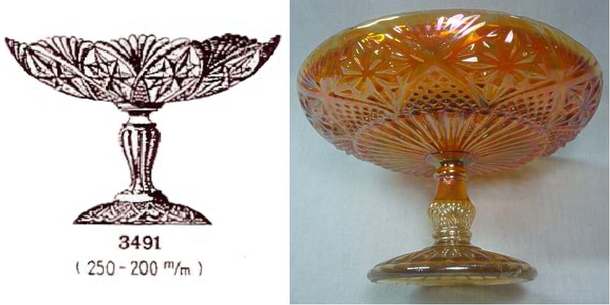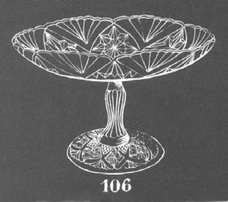Collectors Facts - Iraci, Esberard, Brazil
|
Shapes:
Oval dish (17cm x 25cm)
Oval dish (11.5cm x 17cm)
Comport
|
Colours:
Marigold
Marigold
Marigold
|
This wonderful pattern, made by Esberard of Brazil was discovered by Cláudio Deveikis.
He named it Iraci in honour of his (late) mother. Iraci is a typical native name of Brazil. Grateful thanks to Claudio for sending us details to publish here, and for all the photographs shown on this page.
He named it Iraci in honour of his (late) mother. Iraci is a typical native name of Brazil. Grateful thanks to Claudio for sending us details to publish here, and for all the photographs shown on this page.
Iraci is stylistically very similar to another Esberard comport discovered by Claudio, and named Iracema, as shown below.
Design Inspirations
Claudio notes on his website that this pattern might have been made from moulds originally used by Portieux-Vallerysthal (an 1872 merger of two firms in France). A study of the catalogues of that firm shows important differences between the Portieux-Vallerysthal design- called Normandes in the 1894 Portieux catalogue - and the much later Esberard version of the design.
Iraci Bowl
Comparing the Iraci (Brazil) bowl/dish to the images in the Portieux-Vallerysthal catalogues (Normandes) shows the most marked difference being the base pattern. On Iraci the base has an incised plain star – on Normandes the base has a complex design that echoes the fan and diamond motifs on the rest of the bowl. There are other differences in proportions and the deeper scallops on the edge, but the clearest and most significant difference is, of course, the base design. Our conclusion is that the Iraci bowl from Brazil is was most likely inspired by the French design, but made from new and different moulds.
|
The two views of the Esberard Iraci bowl (on the right, courtesy of Claudio Deveikis) show clearly the difference in the edge treatment, and the design on the base. Below, are two images of Normandes from the Portieux-Vallerysthal catalogues of 1894 and 1907, courtesy of Siegmar Geiselberger. The 1894 image shows the underside and base view: it is very clear that the intricate base pattern on Normandes is different to the Brazilian Iraci design. The side view of Normandes in the 1907 catalogue shows how the fan shapes are prominent along the edge, which again is different from the Iraci piece. |
|
Iraci Comport
Comparing the Esberard Iraci comport to the images in the Portieux-Vallerysthal catalogues of the Normandes comport in the 1907 catalogue again shows significant differences. The stem and foot are entirely different. The shape of the stem is entirely different on the two items. The Iraci foot has a simple rayed design while the Portieux-Vallerysthal foot has a complex pattern that echoes the fan and diamond motifs, and like the bowl, the fan shapes are more prominent around the top of the Normandes version. Again, our conclusion is that the Iraci comport from Brazil is likely an interpretation of the French design, from different moulds. Portieux-Vallerysthal 1907 catalogue, courtesy of Siegmar Geiselberger. Iraci comport picture, courtesy Claudio Deveikis. |
Marinha Grande
|
Interestingly, a very similar pattern to Iraci (and Normandes) was featured in an extract from the 1910 catalogue of the Portuguese glass works, Marinha Grande, shown on the left, courtesy of Siegmar Geiselberger.
The pattern of a fan and star motif is stylistically very similar, and the comport in the Marinha Grande catalogue appears very similar in style and design to the Portieux-Vallerysthal comport, especially around the stem and foot. But which came first? Marinha Grande’s version or Portieux-Vallerysthal? We know that Marinha Grande’s glass works was producing fine glassware from 1826, but we don’t have a catalogue from that time, so it’s not currently possible to be certain of the time line of this fascinating pattern. We also know of other pattern "links" between Marinha Grande and Esberard, for example Cabralia (as shown in Collectors Facts). |
